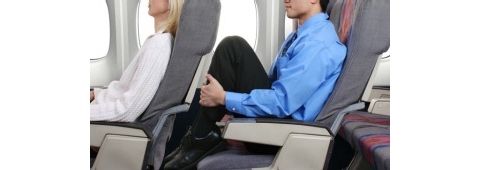There is no doubt that flying adversely affects our bodies in a number of ways. Below is what Boeing has to say in the “Improved Passenger Comfort Guide”.
- The cramped position inhibits the normal body mechanism from returning fluid to the heart. The central blood vessels in your legs can be compressed, making it more difficult for the blood to get back to the heart.
- Gravity can cause fluid to collect in your feet. This results in swollen feet and ankles after a long flight.
- The long inactivity of your body muscles in this position can result in muscle tension, backaches or a feeling of excessive fatigue – during or even after your flight.
Boeing recommends that passengers do light exercises that may assist in increasing blood circulation and massaging the muscles. The Aircycle exercises do both of these things. They promote blood circulation and at the same time work and massage the muscles.

Keep an Aircycle at your feet throughout the flight and use it frequently for greater comfort.
- It can help avoid ankle swelling so that your feet fit back into your shoes at the end of the journey.
- Tucked under your knees it will take the pressure off where the seat sometimes cuts off the circulation while you sleep. DVT most frequently occurs during sleep.
- You can gently exercise your neck, shoulders and upper body too. Using the Aircycle on your knee allows you to gently move these areas
- You can also use it as a back or neck rest when you relax. Adjust the air for your comfort.
When possible, walk around frequently and remember to stretch!
When ready to disembark, deflate your Aircycle, fold it and replace it in its small plastic carry bag. Now it is ready to pop back in your pocket or purse to use at any time while on holiday.









Join the Discussion
Type out your comment here:
You must be logged in to post a comment.